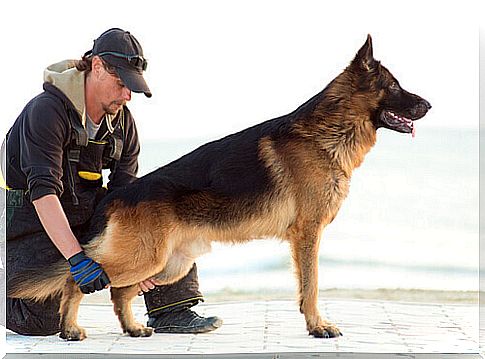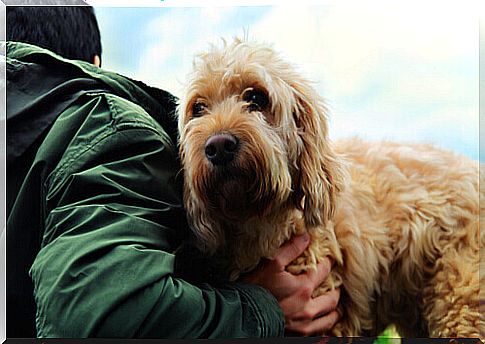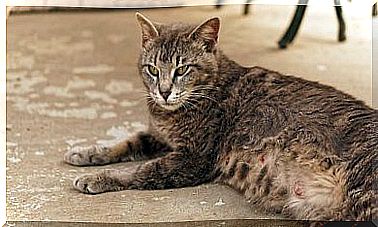Abandoned Dog Therapy For Inmates

The use of dogs to help people with different types of physical or emotional problems is an increasingly present reality. In this article, we’re going to talk about stray dog therapy being carried out with prison inmates in Pontevedra, northwestern Spain. This therapy aims to reintegrate prisoners into society.
In search of social integration of incarcerated youth

The members of the Érguete Foundation, headquartered in the city of Vigo, Spain, are responsible for carrying out the so-called Itínere program . The objective is to achieve the incorporation, both socially and professionally, of people who are being deprived of liberty or who are in the process of leaving the prison system.
At the A Lama Penitentiary Center, the foundation is working with a group of young people who are under 25 years of age. These are young people who, for the most part, were arrested for:
- petty theft
- fights
- Small-Scale Drug Trafficking
- Driving while intoxicated or without a license on several occasions
Furthermore, most of these young people did not complete elementary school and never had a job.
An assistance program for detained youth based on stray dog therapy
In order to interact with young prisoners, the foundation realized that the ideal solution would be the inclusion of dogs. But in this case, they thought it important that not only dogs trained for these types of tasks were used.
So they turned to the Cambados Animal Shelter. The shelter’s support was important in the development of a therapy with stray dogs for young people who are serving time for some crime in A Lama .
Therefore, the task of forming and teaching values to imprisoned youth is based mainly on the interaction that these people will have with the little animals.
Dogs as a way to teach values and respect
“If we are not able to help a twenty-year-old boy, we will not be able to help a fifty-year-old man,” says María Rodríguez Lago, responsible for the Itínere program.
She also explained that among the profiles of this generation under 25 who are in prison are young people who were not responsibly educated by their parents. But there are also children of people with addiction problems. And besides, there are young people who have not been able to adapt to their foster homes.
Through therapy with abandoned dogs, the aim is to educate young people with “values and respect”, points out the professional. For that reason, they chose to work with shelter dogs.
The importance of working with animals that were collected from the street
The dogs chosen are animals that have been abandoned and, in many cases, have suffered different types of abuse. And, although some of the pets that participated in the program had received some form of training in canine therapy, most of the dogs were recently collected from the streets.
Thus, the objective is that young people work with the stray animal. But in what way? Seeking to gain the pet’s trust based on respect for the dog. Teaching things without screaming and without violence.
Thus, they are getting the boys to learn patience too. And, they also teach that they can give and receive affection from their interaction with dogs. The ultimate goal is for them to be able to reduce their impulsiveness and, in this way, avoid the recurrence of crimes.
A shelter that offers different types of therapy with animals that were collected from the streets

On the other hand, the Cambados shelter has been dedicated to assisted therapies with abandoned animals for almost a decade. They stated that, for this type of activity, it is not necessary to acquire any specific breed of dog. In addition, they pointed out that their facilities had the dogs indicated to face different types of help. Like for example:
- Programs for abused women and special education programs for children
- Reception centers for minors
- prisons
- Nursing Homes for the Elderly
- Alzheimer’s patients
- Rehabilitation clinics (for people who have suffered accidents or with cerebral palsy, multiple sclerosis, Parkinson’s disease, etc.)
- People going through long periods of convalescence
- crèches
- Colleges
- Disadvantaged social groups








